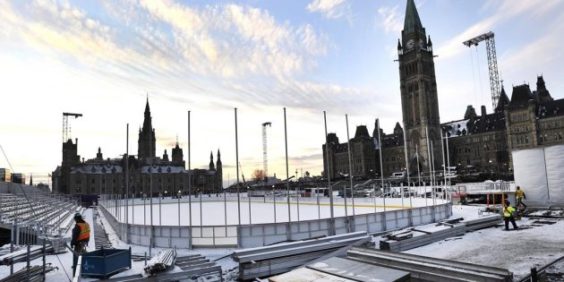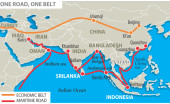Re Ian Bremmer 'Could third-party candidates upend the 2024 US election?' 3 April The current political movement in the USA…
Canada @ 150
Written by Diana Thebaud Nicholson // December 30, 2017 // Canada // Comments Off on Canada @ 150
Federal government plans low-cost rollout of 2017 logo (29 April 2015)
30 December
Ottawa concert cancellation is proof of concept: it can be too cold for Canadians
New Year’s Eve celebration falls victim to subzero cold snap
Ottawa hockey tournament moved indoors but Winnipeg parties on
First no hockey, now no music. Ottawa has declared that it’s officially too cold – even for Canadians.
Heritage Canada has announced that a New Year’s Eve concert planned for Ottawa has been cancelled because of an extreme cold weather warning.
The party’s cancellation on Friday came after the federal government also moved an outdoor hockey tournament indoors and away from a C$5.6m (£3.3m) temporary ice rink installed on Parliament Hill.
The forecast overnight low for the nation’s capital on Sunday is -29C, nearly 20 degrees colder than the seasonal average.
Public skating and a fireworks show on the city’s Parliament Hill will go ahead as planned on Sunday night, but Heritage Canada warned revellers have been warned to dress for the weather and “prepare accordingly to prevent frostbite and other injuries”.
22-23 November
Scott Stinson: Parliament builds an expensive rink for the community, then makes it hard to use
On the lawn of Parliament Hill on Thursday, crews were busy erecting a very expensive monument to that most Canadian of pastimes: excessively prudish regulations
(Ottawa Citizen) Heritage Minister Melanie Joly has explained that this is in fact great value for money because the rink will “support important programming for communities and children” from across the country who are apparently unable to access such programming at the approximately 8,300 other such rinks that already exist in Canada. Also, when the fun ends on Dec. 31 — note: not the end of winter! — the rink will be dismantled and donated to a “vulnerable” local community. It is unclear what the community will do with it, considering it costs millions just to keep the thing operational for three and a half weeks.
Cost of the Canada 150 ice rink too high? (video)
(CBC The National) The cost of the Canada 150 ice rink on Parliament Hill has received an icy reception. Officials say it will now stay open longer than originally planned, but is that enough to justify the $5 million bill?
Canada 150 ice rink
(Global) An outdoor skating rink being built on Parliament Hill for Canada 150’s closing celebrations is expected to cost taxpayers $5.6 million, but Canadians will only have a little over three weeks to skate on it.
The budget for the first-ever rink on the Hill includes the setup, tear-down, some private security, insurance coverage and the attached facilities like change rooms and bleachers. It also includes the cost of bringing 32 peewee hockey teams from across Canada to Ottawa to compete in a special Canada 150 division tournament from Dec. 26 – Dec. 31.
… Conservative MP Ben Lobb noted that along with Ottawa’s permanent indoor skating rinks, the famed Rideau Canal skateway is “literally 500 feet down the street” and there is another public outdoor rink at city hall.
Parliament Hill’s Canada 150 Rink Has Some Very Un-Canadian Rules
No figure skating, no speed skating, no hockey. … Also no food, no rough housing, no tag, no figure or speed skating, and no carrying of children.
31 May – 19 October
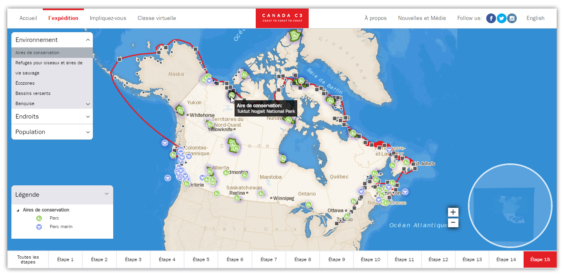 Innovation by CartoVista visually showcases the Canada C3 expedition
Innovation by CartoVista visually showcases the Canada C3 expedition
By all accounts one of – if not THE – most successful initiatives of Canada@150, conceived by Students on Ice, Canada C3 was one of the signature projects
Canada C3 > The Expedition
An Epic Journey to Celebrate Canada and Connect Canadians
Canada C3 is a Signature Project for Canada’s 150th Anniversary of Confederation in 2017. The centrepiece was an epic 150-day sailing journey from Toronto to Victoria via the Northwest Passage. Through this unprecedented journey, Canada C3 is celebrating our environment, sharing the stories of coastal communities and connecting Canadians from coast to coast to coast.
See the 15 Legs of the voyage
4 January
Our politicians need to be pushed to think long-term, even as the world seems impossible to predict
By Jennifer Ditchburn
(Policy Options, IRPP) When Lester B. Pearson lit the Centennial Flame in front of Parliament Hill on December 31, 1966, Canada was on the cusp of major change in many areas. At that time, the country was still fundamentally white (only 3.2 percent of the population did not report European heritage in the 1961 census), but it would begin to see substantial increases in immigration. Women were starting to have a sustained foothold in the workplace, including as members of Parliament. And a national unity crisis was on the horizon.
“Tonight we let the world know that this is Canada’s year in history,” Pearson told the crowd of 2,000 in 1966, as reported by the Globe and Mail.
He continued: “Let the record of that chapter be one of co-operation and not conflict; of dedication and not division; of service, not self; of what we can give, not what we can get.”
The changes were big, and so were the public policy moves in 1966-67.
This was the period that gave us the Canada Pension Plan, the Canada Assistance Plan, the Guaranteed Income Supplement, and the Medical Care Act.
And there were other watershed moments that we might have forgotten. For example, it was shortly before the Christmas recess of 1966 that members of the Standing Committee on Health and Welfare recommended that contraception should no longer be prohibited under the Criminal Code. Yellowknife officially became the capital of the Northwest Territories, instead of Ottawa.
As Canada celebrates its sesquicentennial, it’s interesting to imagine what our policy-makers, researchers and legislators will see as being critical to the lives of citizens in 2067. We could also reflect on missed opportunities that could negatively affect our well-being 50 years from now — consider the many opportunities lost since 1967 to transform Canada’s relationship with Indigenous peoples. Policy Options will carry reflections on some of these issues over the course of 2017, in a series of articles about long-term public policy thinking. (2 January 2017)
Canada ranked #1 place to go in 2017 by New York Times
See also
- Canada ranked as the 2nd best country in the world
- This awesome video of Canada will blow your mind
- Lonely Planet names Canada the best country in the world to visit in 2017
- Canadians unsure if 2017 will be any better than 2016 (SURVEY)
52 Places to Go in 2017
1. Canada
A northern neighbor is a world to explore.
Canada is huge — the second-largest country by area. It’s also a world unto itself, with cosmopolitan cities, barely explored natural wonders and everything in between. And this is the year to visit: In honor of the 150th anniversary of its confederation, when the original colonies came together as one country, Canada is rolling out the welcome mat. All of the country’s more than 200 national parks and historic sites are offering free admission through the year, from the turquoise lakes and mountain peaks of Banff in Alberta to the rolling dunes and red sandstone cliffs of Prince Edward Island along the Atlantic Coast to the newest reserve, the glacial-rounded Mealy Mountains in Labrador. Meanwhile, in the capital, Ottawa, a full year of celebration is planned; more events will be on offer in Montreal, which turns 375. And did we mention the exchange rate? A weak Canadian dollar means American travelers get more for their money. So 2017 offers an ideal time to go north. — Remy Scalza
2 January
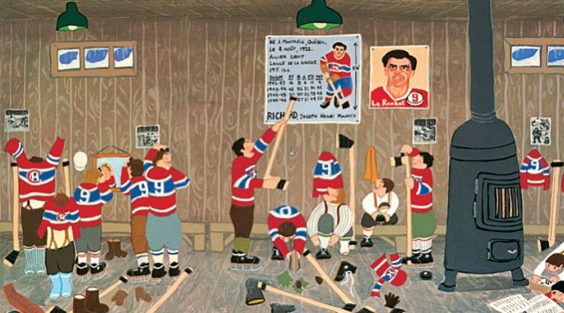 This beloved Canadian children’s book is being turned into a Montreal Musical
This beloved Canadian children’s book is being turned into a Montreal Musical
Owing to the city’s 375th anniversary, the Segal Centre has commissioned The Hockey Sweater to be turned into a musical.
The Hockey Sweater: A Musical will pay homage to the classic Quebec book by reinventing the tale, and turning it into a modern musical for the whole family.
October 19-November 12, 2017
Each month this year, Globe writers will tell their tale of Canada: what its history, geography, peoples and culture mean in their lives.
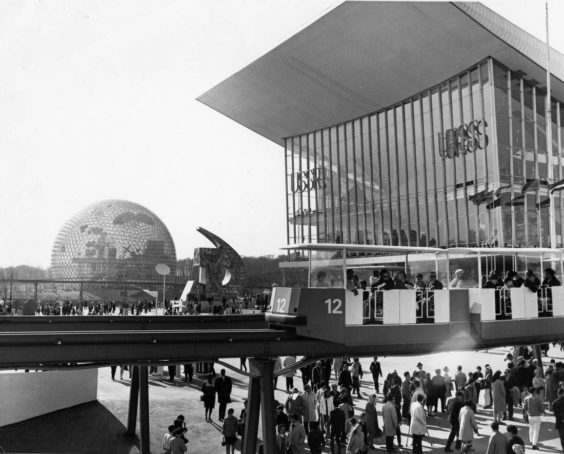
In 1967, change in Canada could no longer be stopped
We like to believe it was a series of political decisions, parliamentary votes, royal commissions and court rulings that remade Canada in its centennial. However, Doug Saunders writes, in its 100th year, the country was officially reflecting realities, ideas and notions of identity that had been brewing beneath the surface for two decades
As one of the earliest second-century Canadians – my parents missed Expo 67 because I came into the world a few weeks after Confederation entered the triple digits – I can’t really be blamed for believing that everything changed 50 years ago. As well as a silver dollar and a futuristic emblem on my birth certificate, my status as a Centennial baby has accorded me an innate and perhaps exaggerated sense of the importance of that year in Canadian history. Yet to look back from Canada’s 150 th year is to realize that this feeling is not just solipsism: 1967 is the hinge upon which modern Canadian history turns and, in certain respects, the key to understanding the challenges of the next half-century.
Perhaps too good an idea?
Free Parks Canada pass in 2017 worries conservationists
What affect (sic) will more tourists have on the ecological integrity of Canada’s most popular parks?
(Canadian Press) Parks Canada is preparing for an increase in visitors this year as people across the country and around the world request free annual passes to explore the nation’s natural treasures as part of Canada’s 150th anniversary celebration.
Conservationists say it is important for people to connect with nature, but there are concerns about how more tourists may affect the ecological integrity of some of the more popular parks.
Ben Gadd, a retired nature guide and author of “Handbook of the Canadian Rockies,” said he is worried about increased vehicle traffic.
“Clearly the highway system in the mountain parks — it is going to be terrible next summer all summer long,” said Gadd, who has been hiking in the region since 1968.
“When you have that situation and animals trying to cross there are going to be more accidents, more animals killed.”
